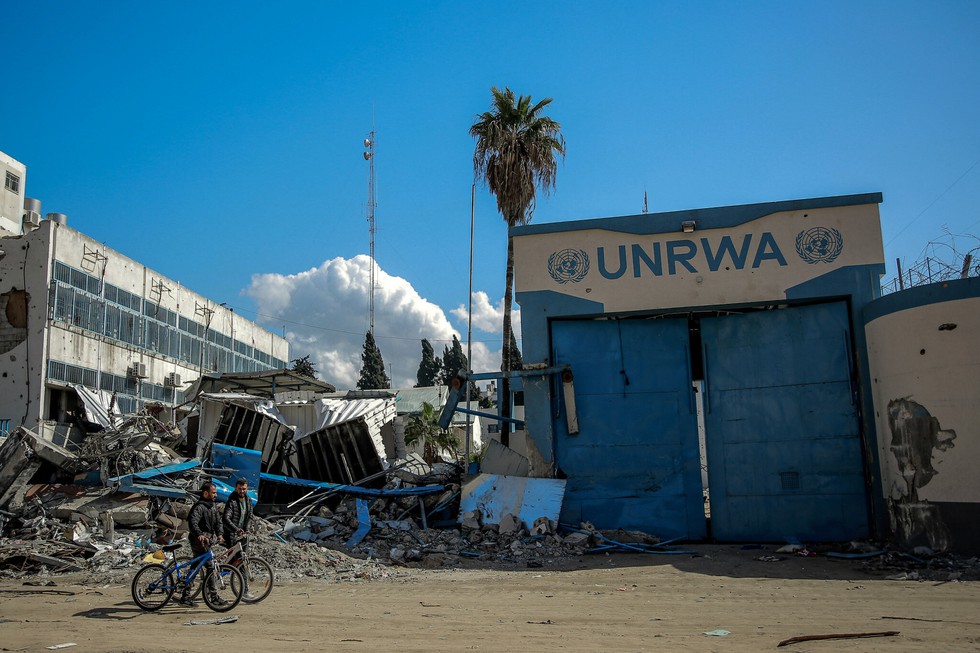
About United Nations Relief and Works Agency for Palestinian Refugees in the Near East (UNRWA):
- It is a subsidiary agency created by the United Nations (UN) General Assembly in 1949.
- Objective: To provide relief, health and education services for Palestinians who lost both their homes and their means of livelihood during the Arab-Israeli wars following the establishment of the State of Israel in 1948.
- Headquarters:
- Beginning operations in 1950, UNRWA was originally headquartered in Beirut but was moved to Vienna in 1978.
- Following the conclusion of the Oslo Accords in the early 1990s, the General Assembly moved the agency to the Gaza Strip in 1996 to demonstrate the General Assembly’s commitment to the Arab-Israeli peace process.
- In the absence of a solution to the Palestine refugee problem, the General Assembly has repeatedly renewed UNRWA's mandate, most recently extending it until 30 June 2026.
- Services: The agency’s services encompass education, health care, relief and social services, camp infrastructure and improvement, microfinance, and emergency assistance, including in times of armed conflict.
- Fields of operations: It provides services in its five fields of operations: Jordan, Lebanon, Syria, the Gaza Strip, and the West Bank, including the East of Jerusalem.
- It supports more than five million registered Palestinian refugees, and their patrilineal descendants, who fled or were expelled from their homes during the 1948 Palestine War, as well as those who fled or were expelled during and following the 1967 Six-Day War.
- Funding:
- It is funded almost entirely by voluntary contributions from UN Member States.
- UNRWA also receives some funding from the Regular Budget of the UN, which is used mostly for international staffing costs.
- Its chief officer, the commissioner-general—the only leader of a UN agency to report directly to the General Assembly—is appointed by the UN secretary-general with the approval of an Advisory Commission.
2. World Heritage Site (WHS)
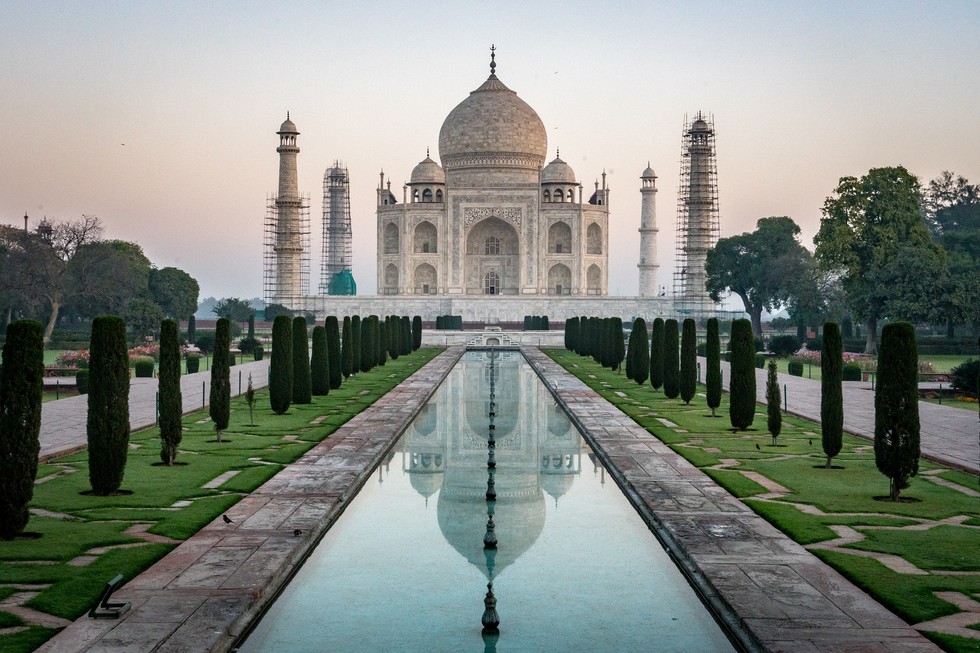
About World Heritage Site (WHS):
- World Heritage Sites are cultural and/or natural sites with legal protection inscribed on the United Nations Educational, Scientific, and Cultural Organization (UNESCO) World Heritage List.
- These sites are designated by UNESCO for having cultural, historical, scientific, or other forms of significance.
- The sites are designated as having “outstanding universal value” under the Convention Concerning the Protection of the World Cultural and Natural Heritage (World Heritage Convention).
- This document was adopted by UNESCO in 1972 and formally took effect in 1975 after having been ratified by 20 countries.
- It provides a framework for international cooperation in preserving and protecting cultural treasures and natural areas throughout the world.
- Designating WHS: There are three types of sites: cultural, natural and mixed.
- Cultural heritage sites include hundreds of historic buildings and town sites, important archaeological sites and works of monumental sculpture or painting.
- Natural heritage sites are restricted to those natural areas that
- furnish outstanding examples of Earth’s record of life or its geologic processes,
- provide excellent examples of ongoing ecological and biological evolutionary processes
- contain natural phenomena that are rare, unique, superlative, or of outstanding beauty, or
- furnish habitats for rare or endangered animals or plants or are sites of exceptional biodiversity.
- Mixed heritage sites contain elements of both natural and cultural
- As of July 2024, a total of 1,199 World Heritage Sites (933 cultural, 227 natural and 39 mixed properties) exist across 168 countries.
- The countries with the most sites are Italy (59), China (57), Germany (52), France (52), Spain (50), India (42), Mexico (35), the United Kingdom (33) and Russia (31).
Key Facts about World Heritage Committee:
- It is a committee of UNESCO.
- The Committee is responsible for the implementation of the World Heritage Convention, defines the use of the World Heritage Fund, and allocates financial assistance upon requests from States Parties.
- It has the final say on whether a property is inscribed on the World Heritage List.
3. Scheme of budgetary support for the cost of Enabling Infrastructure for Hydro Electric Projects (HEP)
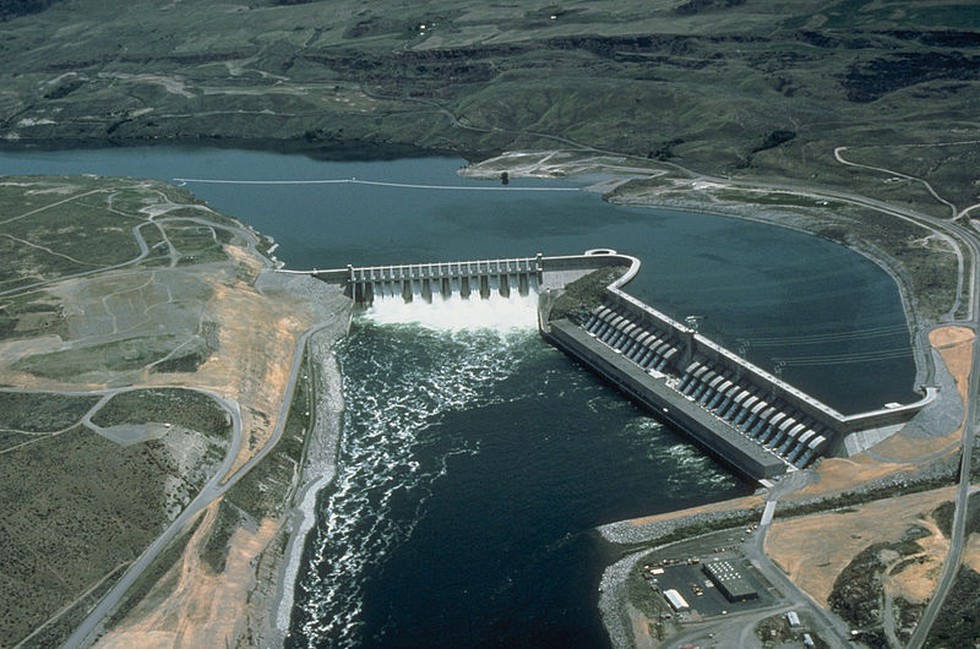
About Scheme of budgetary support for the cost of Enabling Infrastructure for Hydro Electric Projects (HEP):
- This scheme, set to run from FY 2024-25 to FY 2031-32, aims to enhance infrastructure and support the development of hydropower in India.
- The scheme addresses major challenges such as remote locations and inadequate infrastructure by broadening its scope to cover additional costs.
- This includes funding for the construction of transmission lines, upgrading pooling substations, and developing ropeways, railway sidings, and communication infrastructure.
- It also supports the strengthening of existing roads and bridges leading to project sites.
- The scheme is set to support hydropower projects with a cumulative generation capacity of approximately 31,350 MW.
- It applies to all hydro projects over 25 MW, including private sector projects, and Pumped Storage Projects (PSPs).
- Budgetary support limits have been revised to Rs. 1 crore per MW for projects up to 200 MW, and 200 crores plus Rs. 0.75 crore per MW for projects above 200 MW, with potential increases up to Rs. 1.5 crore per MW in exceptional cases.
- The scheme also incorporates a rigorous approval process, where budgetary support will be granted following cost appraisals by the Department of Investment and Public Asset Management (DIB) and Public Investment Board (PIB) and subsequent approval by the Competent Authority.
- The projects whose Letter of Award of the first major package is issued by June 30, 2028, will be eligible under the scheme.
4. Key Facts about Gulf of Mexico
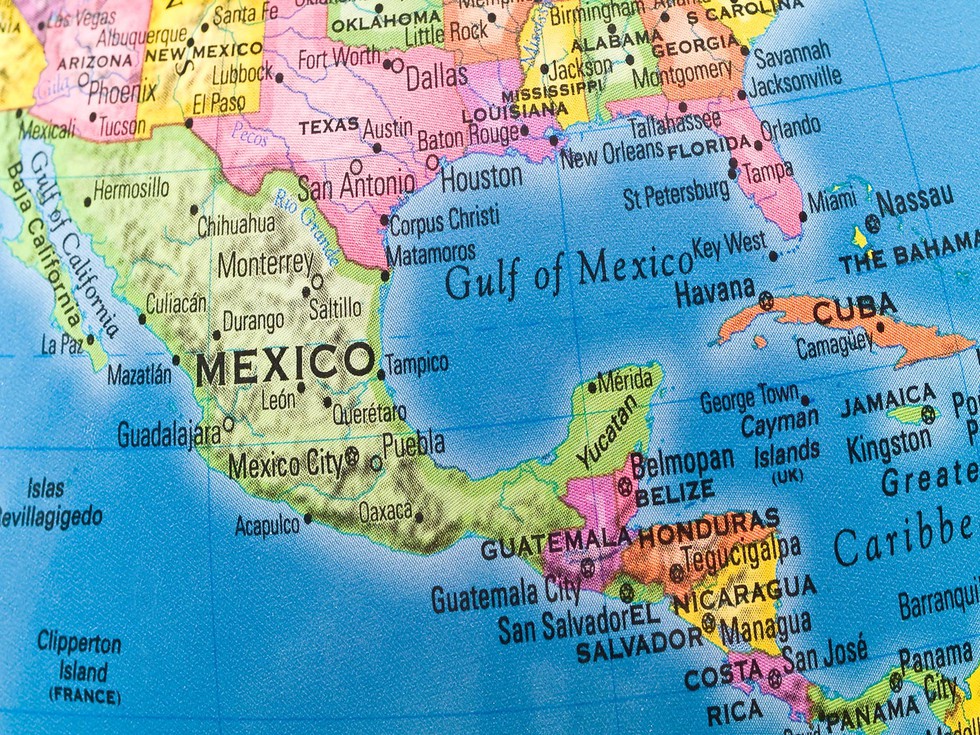
About Gulf of Mexico:
- It is a partially landlocked body of water on the southeastern periphery of the North American continent.
- It is a marginal sea of the Atlantic Ocean and the world’s largest gulf.
- It is surrounded to the west by the Mexican Yucatan and Veracruz regions, to the north by the United States, to the east by the Caribbean islands and Cuba and to the south by the tapering Mexican mainland.
- It is connected to the Caribbean Sea via the Yucatán Channel (between Cuba and Mexico) and with the Atlantic Ocean through the Straits of Florida (between Cuba and the US).
- It is one of the largest and oldest water bodies on Earth. It was formed in the late Triassic period, around 300 million years ago.
- It was formed as a result of seafloor subsidence due to the movement of the tectonic plates.
- Often referred to as the “Mediterranean of the Americas”, the Gulf of Mexico is the 9th largest water body, measuring approximately 1,600 km from west to east and about 900 km from north to south.
- It covers an area of some 600,000 square miles (1,550,000 square km).
- It is somewhat shallow, along the coastal continental shelf areas and has an average depth of 1,615 m.
- Climate:
- The climate varies from tropical to subtropical type.
- The region experiences some of the most severe weather in the world, including major hurricanes, tornadoes, and thunderstorms.
- The seawater from the Caribbean Sea that enters the Gulf of Mexico via the Yucatán Channel, quickly circulates in a clockwise loop current before exiting the Gulf through the Florida Straits, eventually forming the Gulf Stream.
- It is one of the most powerful and warm ocean currents that flow from the Gulf of Mexico towards the northern Atlantic Ocean.
- The Mississippi and the Rio Grande are the major rivers draining into the gulf.
- The shallow continental shelf regions of the Gulf of Mexico contain large deposits of petroleum and natural gas.
- It is the center of the United States oil refining and petrochemical industry, and hence more than 18% of the US oil production is derived from the offshore wells in the Gulf of Mexico.
5. Key Facts about Irula Tribe
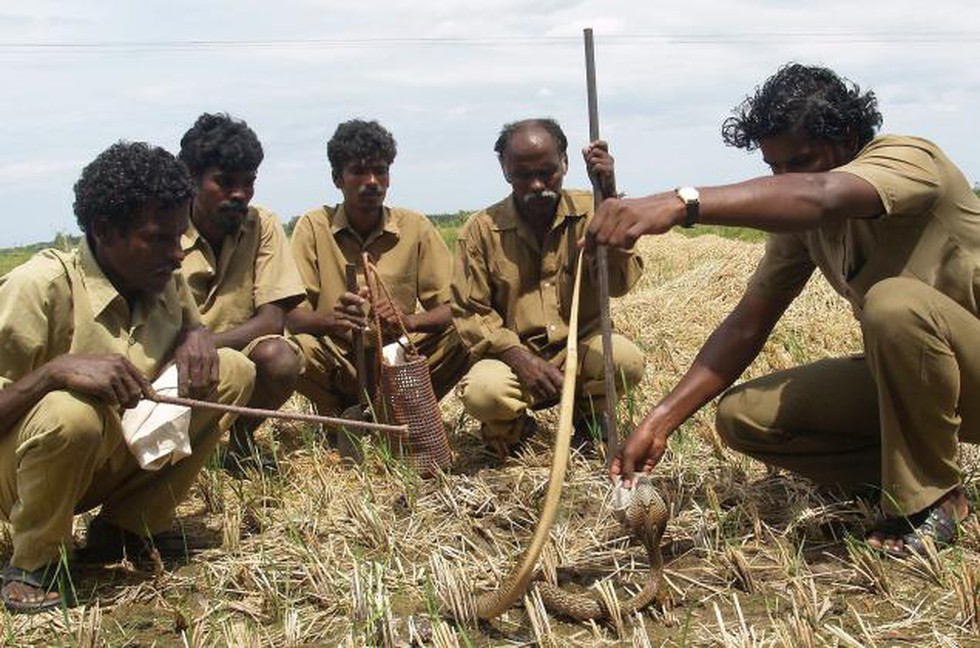
About Irula Tribe:
- Irulas are one of India’s oldest indigenous communities.
- They are a Particularly Vulnerable Tribal Group (PVTG).
- They live primarily in the northern districts of Tamil Nadu, as well as in parts of Kerala and Karnataka.
- Language: Their language, Irula, is related to Tamil and Kannada, which are southern Dravidian languages.
- Religious Beliefs:
- The Irula people don’t have a definite god for them. They are pantheists who make provision for the presence of spirits in humans and objects.
- Their main deity is a virgin goddess called Kanniamma, who is deeply associated with the cobra.
- Irula houses are built together in small settlements or villages called mottas. The mottas are usually situated on the edges of steep hills and are surrounded by a few dry fields, gardens and forests or plantations.
- Traditionally, they have been skilled hunters, gatherers and honey collectors, relying on the forest for their sustenance and livelihood.
- They are specialists in traditional herbal medicine and healing practices.
- Irulas' knowledge of snakes and snake venom is legendary. Their expertise is often sought after in snake rescue and rehabilitation projects.
- The Irula Snake Catchers' Industrial Cooperative Society is a major producer of anti-snake venom (ASV) in the country. It supplies almost 80 percent of the venom that goes into making anti-venom in India.
- They use traditional knowledge and skills to catch snakes, extract venom, and release the snakes back into the wild without harming them.
6. National Instructional Media Institute

About National Instructional Media Institute (NIMI):
- It was formerly known as Central Instructional Media Institute (CIMI) and was established in December 1986 by the Government of India as a Subordinate Office under the Directorate General of Employment and Training (DGE&T), Ministry of Labour & Employment.
- Presently, NIMI is functioning as an autonomous institute under the Directorate General of Training (DGT), Ministry of Skill Development & Entrepreneurship (MSDE), the Govt. of India.
- It is the nodal organization for the development of Instructional Media Packages (IMP), including digital content and Question Banks for assessment, for different Vocational courses.
The recent initiative of NIMI
- It has launched YouTube Channels for the Industrial Training Institute.
- It will provide high-quality training videos to millions of learners across India’s Industrial Training Institute (ITI) skill ecosystem, available in nine languages.
- The new channels—offered in English, Hindi, Tamil, Bengali, Marathi, Punjabi, Malayalam, Telugu and Kannada—are aimed at helping learners improve their technical skills through free, easy-to-access digital resources.
- Each channel has tutorials, skill demonstrations, and theoretical lessons, all curated by industry experts to ensure relevance in today’s vocational training landscape.
- This initiative aligns with India's National Skill Development Mission and the goals of the New Education Policy (NEP).
- NIMI encourages ITI students, instructors, and skilling enthusiasts to subscribe to their preferred regional channels to stay updated with the latest content.
7. Port Blair
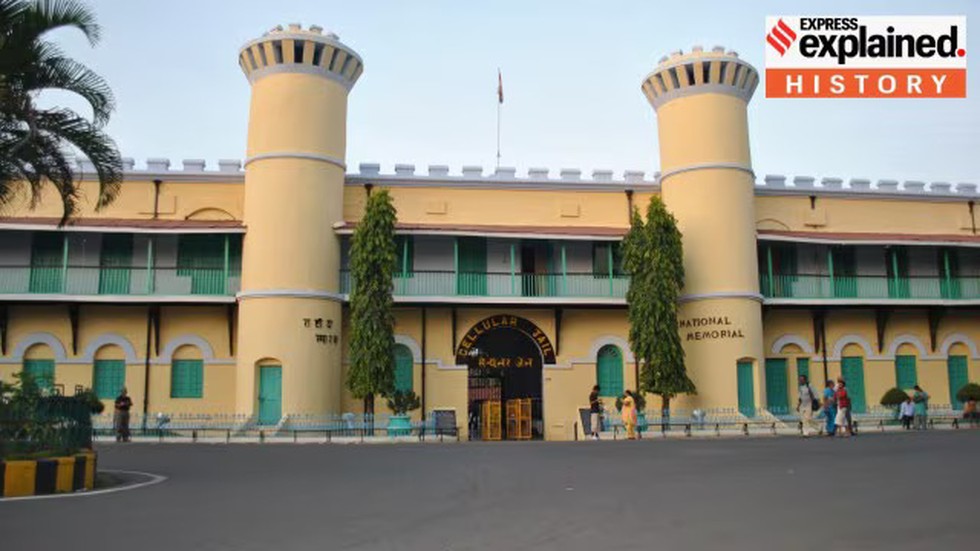
About Port Blair:
- It is the capital city and the entry point of the Andaman and Nicobar Islands.
- It was named after Archibald Blair, a naval surveyor and lieutenant in the Bombay Marine. Blair was the first officer to carry out a thorough survey of the Andaman Islands.
- It is located on the east coast of the South Andaman Island.
- It is also the place that hosted the first unfurling of our Tiranga by Netaji Subhash Chandra Bose.
- Port Blair’s connection with the imperial Cholas and Srivijaya
- Some historical records suggest that the Andaman Islands were used as a strategic naval base by the 11th-century Chola emperor, Rajendra Ito attack Srivijaya, which is in present-day Indonesia.
- As per an inscription found at Thanjavur dated to 1050 CE, the Cholas referred to the island as Ma-Nakkavaram land (great open/ naked land), which possibly led to the modern name of Nicobar under the British.
- As noted by historian Herman Kulke in his co-edited edited book, Nagapattinam to Suvarnadwipa: Reflections on the Chola Naval Expeditions to Southeast Asia (2010), the Chola invasion of Srivijaya was a unique event in the history of India and “its otherwise peaceful relations with the states of Southeast Asia which had come under India’s strong cultural influence for about a millennium.”
- Others like the American historian G W Spencer interpret the Srivijaya expedition as to be part of the Chola expansionism which had been ongoing for decades culminating in wars with other empires of South India and Sri Lanka.
8. What is OpenAI o1?

About OpenAI o1:
- It is a new Large Language Model (LLM) trained with reinforcement learning to perform complex reasoning.
- It thinks before it answers—it can produce a long internal chain of thought before responding to the user.
- This model can reason through complex tasks and solve harder problems than previous models in science, coding and math.
- According to the company, the model is a progressive step toward achieving human-like AI.
- It also demonstrates tangible improvements in key areas, such as generating code and tackling complex, multistep challenges with greater proficiency than its predecessors.
- It has trained these models to spend more time thinking through problems before they respond, much like a human would.
- The o1 model scored 83 per cent on the qualifying exam for the International Mathematics Olympiad, OpenAI said in its blog post. This is a vast improvement from the 13 per cent scored by its predecessor, GPT-4o.
- OpenAI’s previous GPT models were simply taught to provide answers by detecting patterns in training data.
- But, in the case of o1, researchers at the organisation first taught the model using a system of rewards and penalties.
- Then, o1 was taught to process user queries by breaking them down and going through them one step at a time.
- Currently, the o1 can neither browse the internet nor process files and images. It also lacks factual information about recent world events.
9. Onitis bordati
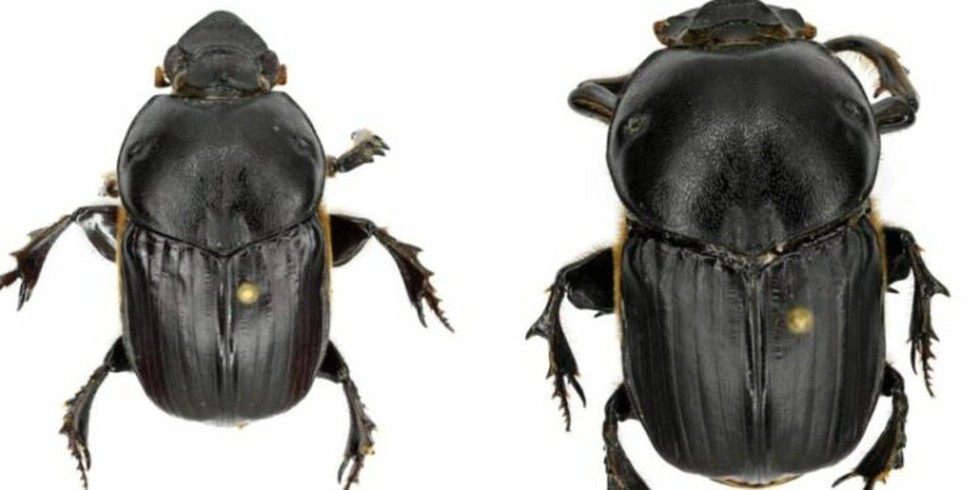
About Onitis bordati:
- It is a dung beetle species belonging to the genus Onitis.
- Appearance: Males of most species have distinctive forelegs that are long, slender and curved, often with teeth or spines.
- The species belonging to the genus Onitis are tunnellers. Males of most species have distinctive forelegs that are long, slender and curved, often with teeth or spines.
- Dung beetle species were previously only found in Vietnam and Thailand.
- Ecological Significance: They are known for their ecological functions, such as seed dispersal, nutrient cycling, and pest control, and plant growth.
- Threats: Habitat destruction and climate change pose significant threats.
Key Facts about Nongkhyllem Wildlife Sanctuary
- Location: The Sanctuary falls in the Eastern Himalayan Global bio-diversity hot spot and located in the state of Meghalaya.
- The area consists of undulating plains to low hills, which are part of the Archaean Meghalaya Plateau.
- The area has become broken and rugged, especially towards the west and north, because of continuous erosion by the rivers Umtrew, Umran, Umling, Umtasor and other smaller streams.
- The Umtrew is the main river of the area and the rest named above are its tributaries. The Umtrew also marks the western boundary of the Reserve Forest and the Sanctuary.
- Fauna: It is home to the Clouded Leopard, Elephants and Himalayan Black Bear.
- Flora: Shorea robusta, Tectona grandis, Terminalia myriocarpa, Gmelina arborea etc.
10. Rangeen Machhli App

About Rangeen Machhli App:
- It is designed to meet the growing needs of the ornamental fisheries sector, providing crucial knowledge resources for hobbyists, aquarium shop owners and fish farmers.
- It is developed by the Indian Council of Agricultural Research(ICAR)-Central Institute of Freshwater Aquaculture (ICAR-CIFA) with support from the Pradhan Mantri Matsya Sampada Yojana (PMMSY).
- Features
- It provides multilingual information on popular ornamental fish species in eight Indian languages, making it accessible to a wide audience.
- The app offers comprehensive details on care, breeding, and maintenance practices to both farmers and hobbyists.
- One of its key features is the "Find Aquarium Shops" tool, which allows users to locate nearby aquarium shops through a dynamic directory updated by shop owners, promoting local businesses and connecting users with reliable sources for ornamental fish and aquarium-related products.
- In addition, the app includes educational modules for both newcomers and professionals in the ornamental fish industry.
What is Indian Council of Agricultural Research (ICAR)?
- It is the apex body for coordinating, guiding and managing research and education in agriculture in the entire country under the aegis of Department of Agricultural Research and Education (DARE), Ministry of Agriculture and Farmers Welfare.


























































































































































.png)
.png)
.png)
.png)
.png)


.png)
.png)
.png)





.png)
.png)






.png)
.png)
.png)
.png)
.png)
.png)
.png)
.png)
.png)

.png)







.png)
.png)


.png)
.png)
.png)


.png)

.png)
.png)





.jpg)

.png)
.png)


.png)

.png)
.png)
.png)

.jpg)

.jpg)


.png)

.png)
.png)
.png)
.png)
.png)
.png)
.png)
.png)
.png)
.png)




.png)

.png)





.png)
.png)
.png)
.png)
.png)
.png)
.png)
.png)
.png)
.png)
.jpg)
.jpg)

.png)
.png)
.png)
.png)
.png)
.png)
.png)
.png)
.png)
.png)
.png)
.png)
.png)
.png)
.png)
.png)
.png)
.png)
.png)
.png)
.png)
.png)



.png)
.png)

.jpg)
.jpg)


.jpg)
.jpg)
.jpg)
.jpg)
.jpg)

.jpg)








.jpg)
.jpg)
.jpg)
.jpg)
.jpg)

















.jpg)
.jpg)







.jpg)


















.jpg)
.jpg)






























































































.jpg)
.jpg)


























.jpg)

.jpg)










.jpg)








.jpg)




.jpg)










.jpg)


















.jpg)












































.jpg)














.jpg)
.jpg)
.jpg)





.jpg)

.jpg)
.jpg)





































































.jpg)


































.jpg)
.jpg)
















































.jpg)












.jpg)


.jpg)




.jpg)
.jpg)
.jpg)

.jpg)
.jpg)
.jpg)
.jpg)

.jpg)
.jpg)
.jpg)

.jpg)
.jpg)
.jpg)
.jpg)
.jpg)
.jpg)
.jpg)
.jpg)

.jpg)


.jpg)
.jpg)
.jpg)
.jpg)
.jpg)
.jpg)
.jpg)
.jpg)
.jpg)
.jpg)











.jpg)
.jpg)





.jpg)
.jpg)
.jpg)
























.jpg)
























.jpg)









.jpg)
.jpg)







.jpg)
.jpg)









































.jpg)
.jpg)
.jpg)
.jpg)
.jpg)

.jpg)
.jpg)
.jpg)
.jpg)
.jpg)


.jpg)
.jpg)
.jpg)
.jpg)
.jpg)

.jpg)
.jpg)
.jpg)
.jpg)
.jpg)
.jpg)
.jpg)
.jpg)
.jpg)
.jpg)
.png)

.png)
.png)

.png)
.png)
.png)
.png)


.jpg)
.jpg)

.jpg)
.jpg)
.jpg)

.png)
.png)
.png)
.png)
.png)
.png)
.png)

.png)
.png)
.png)
.png)
.png)
.png)
.png)
.png)
.png)
.png)





































































-min.png)



.png)




.png)








































